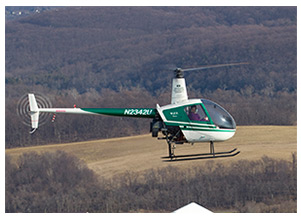Training Tips
|

A good mix
The traffic pattern is busy as you return from a session of local practice. Among the calls heard on the common traffic advisory frequency is one from the Robinson R22 training helicopter based at the field.
When you studied airport traffic pattern operations and regulations, you read that helicopters are expected to "avoid the flow of fixed-wing aircraft" when coming and going from the airport. That's good to know—but wouldn't it be helpful to understand what your rotary-wing colleagues learn about the same subject?
Just as the Airplane Flying Handbook is your source for much information about procedures for your flight operations, the Helicopter Flying Handbook addresses the question of traffic patterns and how helicopter pilots maintain safe separation from other traffic.
"Airplanes and helicopters do not mix well in the same traffic environment. At multiple-use airports, regulation states that helicopters should always avoid the flow of fixed-wing traffic. To do this, be familiar with the patterns typically flown by airplanes," the book says.
What kind of pattern is flown by helicopters?
"An accepted helicopter traffic pattern is flown at 500 feet AGL and consists of right turns," the handbook explains. "This keeps the helicopter out of the flow of fixed-wing traffic."
In his series, "Rotorcraft Rookie," Flight Training magazine Editor Ian Twombly, a veteran airplane pilot, is reporting on his training to fly helicopters at towered Frederick (Md.) Municipal Airport. He offered some insights for fixed-wing pilots about helicopter operations.
"It's the helicopter pilot's responsibility to avoid fixed-wing traffic. So in general a helicopter should never be a traffic conflict concern. We do a lot of interesting things at Frederick to make this happen. The tower runs fixed wing on the left and us on the right of the primary runway. Even so we stay at 600 feet agl," he said.
"I think the bigger issue might be on the ramp. Since some [helicopter] pilots will make approaches directly to and from ramps, it pays to keep an eye out."
What may concern fixed-wing pilots the most about helicopters, he said, is "that our patterns are different, and they don't know how to interpret that." Knowing of that concern, local helicopter pilots "are well aware of the fixed-wing traffic and do everything we can do avoid it."
Bottom line: The more you know about how other folks fly, the safer the airport environment is for all.
|
|

